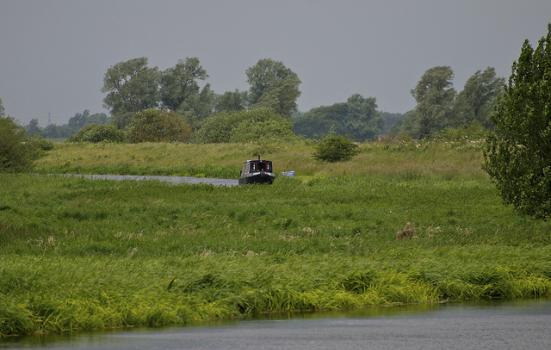ACE will review how it is meeting the needs of rural communities following a report that paints a largely positive picture of arts engagement in rural England.

Martin Pettitt (CC BY 2.0)
Communities in East Anglia’s Fenlands and remote areas of North Yorkshire appear to be underserved by Arts Council England’s (ACE) regularly funded touring organisations. A map of postcodes reached by ACE’s National Portfolio Organisations (NPOs) in 2012/13 reveals blackspots in these areas and a new report by ACE is calling for further investigation into why this might be. Reviewing evidence and data relating to rural engagement in the arts, the report writers conclude that rural communities “are generally well served in terms of the geographical reach of toured activity”, but they say, as 17.6% of England’s population live in rural areas, “it would seem fair and reasonable” for ACE to bring its investment in these regions to an equivalent proportion.
The report highlights a trend for rural NPOs to be granted smaller awards than their urban counterparts: NPOs in rural locations will make up 4.6% of the portfolio for 2015-18, but will receive just 2.5% of ACE’s total investment, while those in towns located within largely rural areas will make up 13.1% of NPOs and receive 10.2% of the investment. The vast majority of grants from other funding streams – Grants for the Arts and the Strategic Touring Programme – are awarded to applicants located in urban areas, but the audiences they benefit are much more dispersed. A recommendation of the report is to investigate why the success rate of Grants for the Arts applications is lower amongst individuals and organisations based in rural areas.
A largely positive picture of arts engagement in rural England is painted by the report. Based on data from the Taking Part survey, it reveals that the rural population of England is generally more engaged with the arts than those living in towns and cities. Between April 2005 and March 2013 around two-thirds of countryside dwellers engaged with the arts three or more times a year – significantly higher than the England-wide average of 60.8%. It recommends investigating the reasons for this, “to learn about how engagement could be boosted in other areas”.
Despite seeming success in engaging rural audiences, the report highlights a lack of understanding about the art-going habits of those in the countryside. NPOs based in towns within largely rural areas – such as Colchester and Stratford-upon-Avon – are often thought of as ‘cultural hubs’, but the report found insufficient evidence that these organisations are actually serving their local, rural communities and is also calling for further audience data analysis at these organisations.
The report marks “a first step” by ACE in improving “how it collects, maintains, analyses and makes available data and evidence relevant to rural England” – an area that it recognises is currently lacking adequate information. It follows the recent publication of an independent review of rural proofing and the publication of a ‘position statement’ by ACE last year, in which it rejected the need for a specific rural strategy or investment programme, but said it could make better use of networks and partnerships to raise awareness of the arts and culture in rural areas. ACE now plans to revisit its approach and update its position statement.




